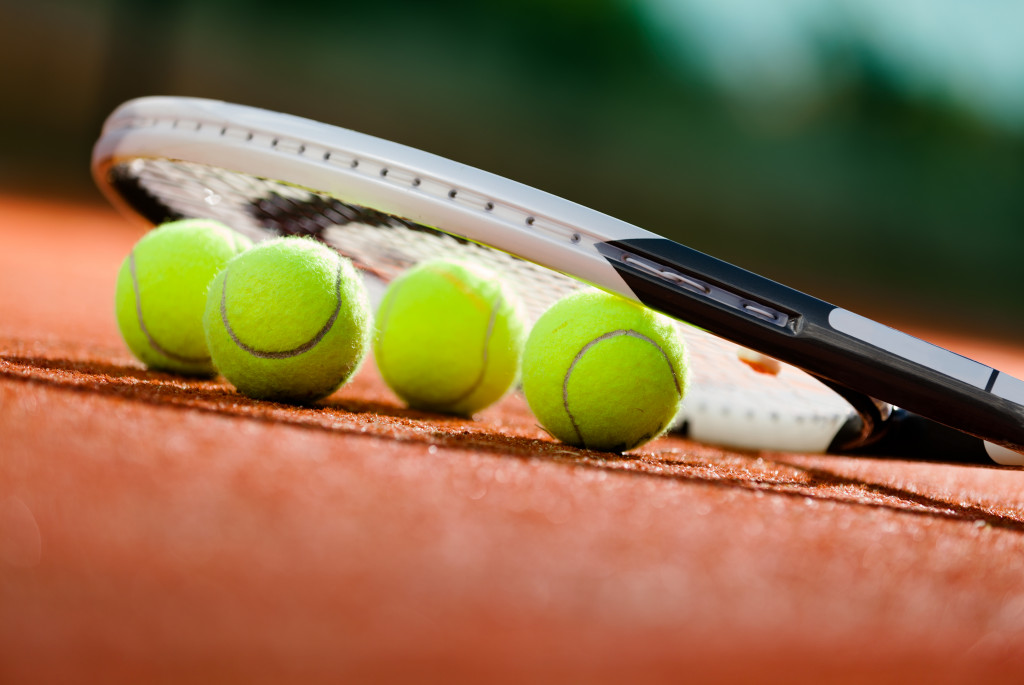Sports are the ultimate test of human athleticism. Fame and glory await those who are exceptional in shaping their bodies into achieving their fullest potential. Technology, on the other hand, is a scientific application that is seen more as the work of the mind. The world of sports has opened itself up to technology, allowing for improvements in gamesmanship, player development, and standardizing achievement.
Technology in sports takes the form of instant replay, goal-line and velocity cameras, sensors, and timing systems, to name a few. In-helmet headsets used by football players make communication with the sidelines possible; RFID chips make timing more accurate; and technology has allowed for the manufacture of safer, more effective sports equipment.
Tennis has started catching up to the rest of the sporting universe and has finally integrated technology and analytics into training programs, athlete development, and coaching.
GPS and Wearable Technology
The global positioning system has proven to be a vital asset in various wearable technology for athletes. Athletes in training could wear a digital device, usually as a vest, which tracks and records all sorts of data points relevant to the parameters of the game.
Wearable GPS mechanisms for athletes collect data about elements such as total distance covered, sprint intensity, and general physical exertion. These data points are critical in providing insight into an athlete’s quality of training and can help in the formulation of more specialized training programs. It is now easier to tailor-fit training and conditioning activities to an athlete’s levels of endurance and effort; to go about building on current strengths, and to gain optimal results from further training.
For instance, if an athlete has a particularly challenging training workout on a certain day, his or her trainers would know in which directions to step back and avoid injury.
Wearable GPS technology is mainly used to gather data and determine more accurate athlete profiles and strategize training programs accordingly.
Relatively speaking, tennis is still at the early stages of integrating wearable technology into athlete training. Tennis is distinct from other sports disciplines in several ways. First of which is the fact that tennis, at any given season, can be played on various surfaces: clay, grass, or hard court. With each surface type, the bounce and trajectory of the ball will be distinct, inflicting stress on an athlete’s joints and tendons in varying degrees.
Furthermore, tennis requires several combinations of “micro-movements”. In the course of a match, a tennis player constantly changes directions. From available data gathered from computer technology, both coaches and athletes have even come up with a new game metric referred to as “red steps” (or redirect steps). It is now a new stat in measuring a tennis player’s lateral movements. A player taking an extra step might signify fatigue while in gameplay.
In a number of sports, the use of wearable tracking technology is allowed. In tennis, however, neither the ATP nor the WTA has approved the use of wearable GPS during actual matches. Tennis players, instead, use such devices during training or warm-up and just simulate an actual set. The data gathered from these practice sessions can predict, with fair accuracy, how the player will perform during an actual match.
Analytics

In sports, it was baseball that led in data collection and analytics for the purposes of training and game improvements. Technology facilitated both the gathering of data and statistics analysis that had significant contributions to better training programs, smarter drafting, and actual gameplay.
Data collected on and the analysis of various players’ hitting techniques or tendencies made team drafting more systematic in baseball. Likewise, in both the NBA and NFL, teams have been relying on analytics of player-tracking data to facilitate game strategies, training, and drafting.
Analytics have been applied in tennis by providing detailed game reports. Tracking technology provides an outlook on player movement on the tennis court and analysis of such data based on tennis metrics can be used to design better conditioning and training activities suitable for a particular player. There’s also service analysis that allows for exact measurements of serve trajectory and landing points. The WTA and ATP have, in fact, partnered with leading technology providers to help in tracking player statistics during matches.
In player training, the use of high-precision sports radar guns wirelessly connected to display boards can record real-time ball velocity, providing input for strengths and opportunities that can be addressed with targeted conditioning and training activities.
In the last two decades, tennis has taken major leaps in applying technology and analytics to the improvement of the game, its players, and the development of new athletes. Before then, basic tennis stats such as winner count and service percentage were the only data monitored in matches. Technology and analytics provided the sport of tennis an entirely new dimension with wearable GPS technology, high precision monitoring devices, and analytics software.
Artificial intelligence capability facilitates intensive analysis of statistics on player performance that not only helps build on existing capabilities but is instrumental in identifying emerging tennis talent.






